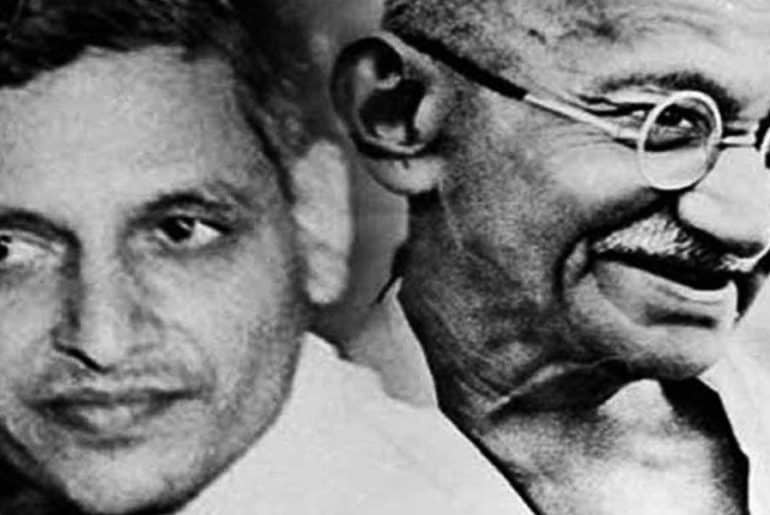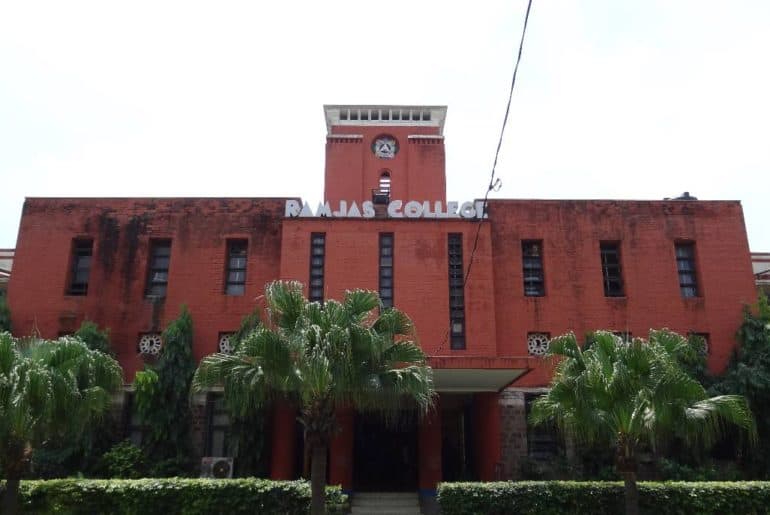From sheltering Chandra Shekhar Azad to jumping over the walls of confined campuses for leading a protest, DU students have a story of their own to tell about their contribution to the Indian freedom struggle.
The University of Delhi (DU), established in 1922, was supposed to be the centre of educational and cultural control for the Britishers. The University received funds amounting to INR 1 lakh per year. Since the British had the monetary power over the DU colleges, they threatened to withhold government grants and forced the college principals to take strict action against any politically active student and staff. In fact, in September 1942, the government cancelled the wheat permits of hostels of three colleges of Delhi University – Indraprastha College, Hindu College, and Shri Ram College of Commerce. Although the British didn’t give any reason for this action, it was seen as an act of vengeance against the colleges for participating in the freedom struggle.
Despite that, DU contributed actively in the form of cadre and infrastructure in the Indian freedom struggle. During the Civil Disobedience Movement, they put up the national flag on the flagstaff in campuses. Even the college buildings served as hiding places for revolutionaries and hosted crucial conferences.
Vice Chancellor’s office The building which now houses the Vice Chancellor’s office was earlier called the Viceregal Lodge. It served as the residence for five Viceroys and hosted several crucial conferences. Bhagat Singh was confined here and his trials were held in this very building too. It is also said that the Gandhi-Irwin pact came into existence in this Lodge.
Ramjas College This beautiful campus was surrendered during World War II for the use of Allied forces. Around the same time, India was taking the opportunity to revolt against the Great Britain, which had weakened due to the war. A group of Ramjas students was arrested and jailed for its involvement in the freedom struggle. Their names have been inscribed on a plaque, near the college auditorium.
The hostel students also sheltered Chandra Shekhar Azad, while he was evading the British government. They kept him in hiding, and for months disguised him as a Sikh student from Pakistan.
St. Stephen’s College Several significant leaders including Lala Hardayal, the first revolutionary, and Sir Chhotu Ram, the leader of Unionist Party of Punjab, were from the St. Stephen’s College.
Students and staff of this college protested in several ways, for example, C. B. Young, an English professor wrote a column condemning the Jallianwala Bagh massacre. In 1946, Sameeruddin Khan, a Stephanian, disrupted the morning assembly and with 50 to 100 boys, they boycotted classes, organised a protest march, and pulled down the Union Jack from the flagstaff. Charles Freer Andrews, an English teacher in the college, was close friends with Mahatma Gandhi and Rabindranath Tagore and even went to South Africa in 1914 to persuade Gandhi to come to India and lead the freedom movement.
Hindu College This college was the centre for political debate and action particularly during the Quit India Movement. Several students and teachers of the college went to prison following the movement.
Since Hindu College had a Students’ Parliament back then, it became an easier platform for many national leaders including Mahatma Gandhi, Pt. Jawahar Lal Nehru, Sarojini Naidu, and Subhash Chandra Bose to motivate and guide the youth of the nation.
Indraprastha College for Women Writing about the bravery of students of Indraprastha College for Women (also known as IP College), Dr. Aparna Basu, a professor of history at DU and author of the book University of Delhi (1922-1997), writes, “During the Quit India Movement on 10th August 1942, a vociferous gathering of Hindu College students and ladies from Indraprastha College collected outside Stephens’ and urged Stephanians to join them in a procession to support the Congress leaders who had been jailed the previous day. The crowd marched down Alipur Road, passing enroute IP College, whose authorities had shut the gates to prevent the girls from joining in. They resourcefully jumped down the walls assisted by willing Stephanian hands and the procession continued down Chandini Chowk, shouting slogans.”
Dr. Meena Bhargava and Dr. Kalyani Dutta, in their book, Women, Education, and Politics: The Women’s Movement and Delhi’s Indraprastha College, mention that the students of IP College also started a charkha association in college against the principal’s order.
Zakir Husain Delhi College Situated in central Delhi, the 326-yearold Zakir Husain Delhi College predates Delhi University by over 200 years. At the time when the British would demean our literary heritage by saying, “A single shelf of a good European library was worth the whole native literature of India and Arabia,” this college established international standards of education in the medium of Hindustani or Urdu. Its old walls have braved the Revolt of 1857. During the partition of India, the college was set on fire by the mobs but somehow the staff members managed to protect the library.
The Foundations of Delhi University Delhi University was established 96 years ago with only two faculties. Since then it has flourished to be one of India’s largest universities with 90 colleges, 87 departments, and more than a dozen centres. But what was the beginning of this enormous educational institution and what is its inspiration?
The University of Delhi came in existence in 1922 and saw the affiliation of St. Stephen’s College, Ramjas College, and Hindu College, which was closely followed by Zakir Husain Delhi College and Indraprastha College for Women. The importance of instituting DU came to the British as an exercise to mitigate the attempts by nationalists to set up their own institutions. A bill to reorganise Indian universities was passed and came into effect on 1st May 1922. We celebrate this date as the Foundation Day.
Mr. Hari Singh Gour, a distinguished jurist and social reformer, served as the University’s first Vice-Chancellor and pioneers like Mr. Daulat Singh Kothari and Mr. Panchanan Maheshwari were part of the faculty. With its motto, ‘Nishtha Dhriti Satyam’ (Dedication, Steadfastness, and Truth), the University has time and again shown its contribution and commitment to nation building. DU has produced an illustrious array of alumni across the fields who went on to become presidents, scientists, and artists.
Be it the Indian independence movement or the democratic struggles of the present times, Delhi University has been on the forefront of all important events. The University that once operated out of Ritz Cinema, Kashmiri Gate, has today expanded its web in all directions of the National Capital Region.
On a lonely day if you press your ear against the college walls, you will hear the whispers of those who came before us. They will tell you their stories of struggle against the British. It will speak of the foundation that has been made and its legacy which is in the making.
Feature Image Credits: Delhi University
Khyati Sanger
[email protected]
Niharika Dabral
[email protected]


